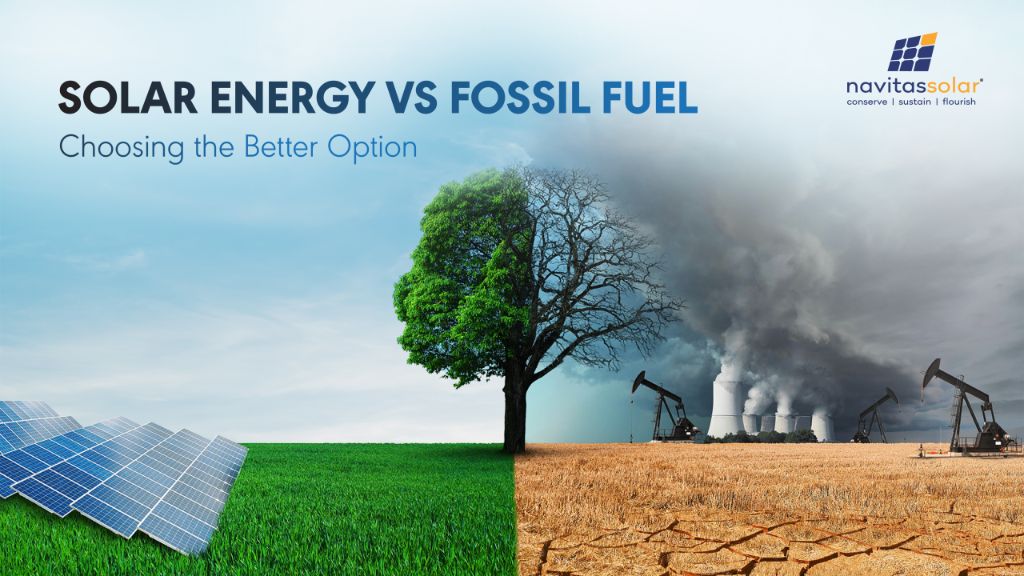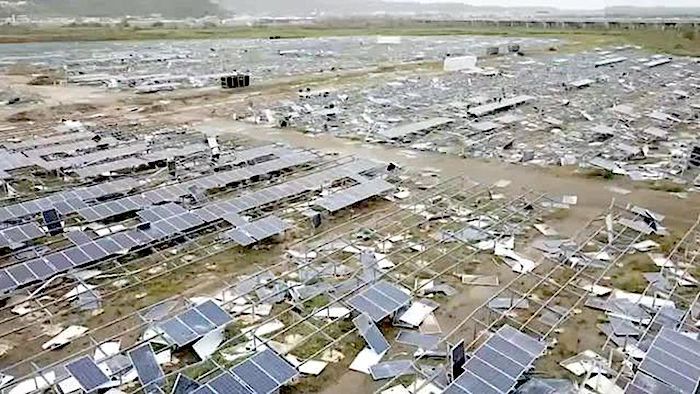Why Fossil Fuels Are Better Than Renewable Energy?

When comparing energy sources like fossil fuels and renewables, there are complex trade-offs to consider across factors like cost, reliability, environmental impact, and energy independence. While renewable sources like solar and wind are clearly better for the environment, fossil fuels currently provide cheaper and more dependable energy in many contexts. This complex debate involves weighing environmental benefits against economic costs.
This article provides an in-depth comparison of fossil fuels and renewable energy based on factors like cost, reliability, job creation, and public health. By evaluating the nuances around comparing energy sources, we can make more informed choices about our energy future.
Costs
Historically, renewable energy sources like solar and wind were more expensive than fossil fuels in terms of upfront costs. Building large-scale solar farms or wind turbines required significant initial investments. However, costs for renewables have come down dramatically in the last decade. According to a recent report from the International Renewable Energy Agency (IRENA), solar and wind power became cost-competitive with fossil fuels between 2010-2022, even without financial support (https://www.irena.org/News/pressreleases/2023/Aug/Renewables-Competitiveness-Accelerates-Despite-Cost-Inflation). In many parts of the world, building new wind or solar is now actually cheaper than building fossil fuel plants.
Operating costs are also lower for renewables compared to fossil fuels. Wind and solar power do not require fuel to be burned to generate electricity. This gives them an advantage over coal, natural gas, and oil plants that must continually purchase fuel. According to IRENA, the renewable power added globally in 2021 is saving approximately $55 billion annually from avoided fossil fuel costs (https://www.irena.org/news/pressreleases/2022/Jul/Renewable-Power-Remains-Cost-Competitive-amid-Fossil-Fuel-Crisis).
However, fossil fuels do receive substantially higher subsidies from governments globally. The International Energy Agency estimates fossil fuel subsidies reached $400 billion in 2020. Renewables received around $150 billion in subsidies the same year. Removing fossil fuel subsidies could help make renewables even more cost-competitive.
Reliability
Fossil fuels have historically provided more consistent energy output than renewables like solar and wind. Coal and natural gas plants can operate 24/7 regardless of weather conditions, while solar panels don’t produce energy at night and wind turbines rely on adequate wind speeds (Jacobs, 2023).
However, advances in energy storage technology are helping to overcome the intermittency issues with renewables. Battery storage systems can store excess renewable energy when conditions are ideal and discharge it when needed. With sufficient storage capacity, renewables can provide baseload power around the clock (Inspire Clean Energy, 2022).
In the future, a diversified mix of renewables plus storage may prove even more reliable than depending predominantly on fossil fuels. Outages at individual plants have less impact on a distributed renewable network. And fossil fuels face their own reliability challenges, like supply chain disruptions of coal and gas.
Environmental Impact
Fossil fuels like coal, oil and natural gas have a much larger negative impact on the environment compared to renewable energy sources. When burned, fossil fuels release significant amounts of carbon dioxide (CO2), a major greenhouse gas that contributes to climate change. According to the Union of Concerned Scientists, coal power plants in the U.S. alone are responsible for almost 1.5 billion tons of CO2 emissions per year, representing about 30% of total U.S. CO2 emissions from all sources.
The carbon footprint, or total lifecycle greenhouse gas emissions, of renewable energy sources like solar, wind and hydropower are estimated to be up to 6 times smaller than fossil fuels like coal. Fossil fuel power plants also produce air pollutants like sulfur dioxide, nitrogen oxides and particulate matter that can cause smog, acid rain and respiratory issues.
Extracting and transporting fossil fuels can also generate toxic waste products that pollute the environment. Coal mining, for example, produces ash, sludge and slurry that contain arsenic, mercury and other heavy metals that can contaminate groundwater and streams. Fossil fuel operations also have the potential for massive spills and contamination, like the BP oil spill disaster in the Gulf of Mexico in 2010.
In comparison, renewable energy technologies produce minimal toxic waste and air pollution when generating electricity. While no energy source has zero impact, most analyses show renewables are far preferable to fossil fuels when considering environmental factors like emissions, pollution and waste.
Energy Independence
The United States has become a net exporter of energy in recent years thanks to the shale revolution that unlocked vast reserves of oil and natural gas (Pew Research Center). Fossil fuel production has reduced American dependence on foreign energy imports and improved energy security. In 2019, the U.S. exported more energy than it imported for the first time since 1953.
Energy independence gives America more flexibility in foreign policy decisions and reduces vulnerability to supply disruptions caused by geopolitical turmoil. Relying on domestic fossil fuel production instead of imports from countries like Russia, Venezuela, and Saudi Arabia enhances national security.
A rapid shift away from fossil fuels could jeopardize recent energy independence gains. Renewables like wind and solar cannot yet match the scale of America’s energy needs. Maintaining fossil fuel production preserves energy self-sufficiency while the country transitions to cleaner energy over the coming decades.
Job Creation
The fossil fuel industry has historically been a major provider of jobs worldwide. However, employment in the industry has been declining in recent years. According to a report from the Brookings Institution, fossil fuel extraction jobs fell from 300,000 in 2019 to 256,000 in 2020 in the United States alone.
Meanwhile, jobs in renewable energy are booming. The renewable energy sector employed around 3.4 million people in the U.S. in 2021, outnumbering fossil fuel jobs nearly 3 to 1. Jobs related to solar, wind, energy efficiency, energy storage, and electric vehicles are expected to continue growing rapidly. Renewable energy already supports more jobs than coal mining in 41 states and more jobs than natural gas in 33 states.
Furthermore, renewable energy jobs tend to provide higher and more equitable wages compared to fossil fuel jobs. Clean energy jobs pay up to 20% more on average than the national median salary. The transition to clean energy provides an opportunity to create family-sustaining, high-quality careers accessible to marginalized communities.
While some fossil fuel workers may struggle with the economic transition, most analyses find that clean energy development will be a net job creator. With the right policies in place, new clean energy jobs can provide opportunities for laid-off fossil fuel workers and lift up disadvantaged communities.
Public Health
Fossil fuels like coal, oil, and gas negatively impact public health in multiple ways. Burning fossil fuels releases harmful pollutants into the air that degrade air quality and are linked to respiratory and cardiovascular diseases. According to Harvard, burning fossil fuels creates fine particulate matter, ozone, nitrogen oxides, sulfur dioxide, mercury, and other toxic substances that contribute to asthma, lung cancer, heart disease, stroke, and premature death (https://www.hsph.harvard.edu/c-change/subtopics/fossil-fuels-health/).
Fossil fuel extraction, storage, and transportation can also lead to water pollution through oil spills, fracking, and pipeline leaks. These pollute drinking water and threaten public health (https://www.hsph.harvard.edu/c-change/subtopics/fossil-fuels-health/). People near extraction sites are exposed to carcinogenic and neurotoxic chemicals. Fossil fuel power plants produce coal ash and other toxic waste that pollute waterways.
In contrast, renewable energy sources like solar, wind, and hydropower emit minimal to no pollutants when generating electricity. Widespread use of renewables improves air quality and reduces diseases linked to air pollution. According to the Department of Energy, generating electricity from wind and solar rather than fossil fuels prevents numerous premature deaths and health issues annually (https://www.energy.gov/eere/health-and-safety-benefits-clean-energy). Renewables help create long-term public health benefits.
Regulations
Government policies and subsidies have long favored fossil fuels over renewable energy. Fossil fuels receive over $20 billion in subsidies annually in the U.S. compared to $1 billion for renewables, according to a 2021 analysis by the Nuclear Energy Institute (1). This disparity makes it challenging for renewable energy to compete on a level playing field.
However, as climate change and energy independence become larger priorities, government policies are shifting. Many governments now offer subsidies, tax credits, and other incentives to grow renewable energy. For example, the U.S. Inflation Reduction Act of 2022 contains over $370 billion in clean energy incentives (2).
The transition away from fossil fuels also faces challenges. Renewable energy currently meets only 12.6% of total U.S. energy needs, while fossil fuels provide 79% as of 2021 (3). Phasing out fossil fuel use will require massive investments in renewable energy infrastructure and storage capabilities across electric grids. Workforce training is also needed to transition fossil fuel workers into renewable energy jobs.
While the shift to renewable energy faces obstacles, government policies, falling technology costs, and public sentiment increasingly favor clean energy over fossil fuels.
(1) https://www.nei.org/news/2021/government-subsidies-fossil-vs-renewable-energy
(2) https://www.forbes.com/sites/energyinnovation/2022/11/30/fossil-fuel-funded-opposition-is-blocking-americas-clean-energy-transition-permitting-reform-can-help/
(3) https://www.eia.gov/energyexplained/us-energy-facts/
Future Outlook
The future for renewable energy looks bright as technology improvements continue to drive down costs. According to the UN, “The costs of renewables have declined rapidly in the last decade, and are now the cheapest source of new power generation in many countries around the world.”
Costs for solar and wind are projected to decline even further over the next decade. The International Renewable Energy Agency (IRENA) predicts the global weighted average cost of electricity from solar PV could plunge 58% by 2025 and onshore wind costs could fall 47%. This makes renewables increasingly competitive with fossil fuels.
Global energy trends show the rapid growth and adoption of renewables. According to IRENA’s ‘World Energy Transitions Outlook’, the share of renewables in total final energy consumption is set to rise to over 60% by 2050 in the agency’s most ambitious energy transformation scenario.
Conclusion
When comparing renewable and fossil fuel energy sources, there are tradeoffs to consider on both sides. Fossil fuels currently provide more reliable baseload power and jobs, while renewable energy produces less emissions and reduces environmental impact. However, renewables are becoming more cost-competitive and reliable with technological improvements. An optimal energy mix likely involves a transition towards more renewables while maintaining fossil fuels to ensure grid reliability until storage solutions advance. More balanced energy policy and long-term planning is needed for a successful transition. While fossil fuels have served us well historically, renewables offer a cleaner future if implementation challenges can be overcome through innovation and balanced policymaking. With prudent planning, we can move towards an energy mix that balances affordability, reliability and environmental sustainability.







